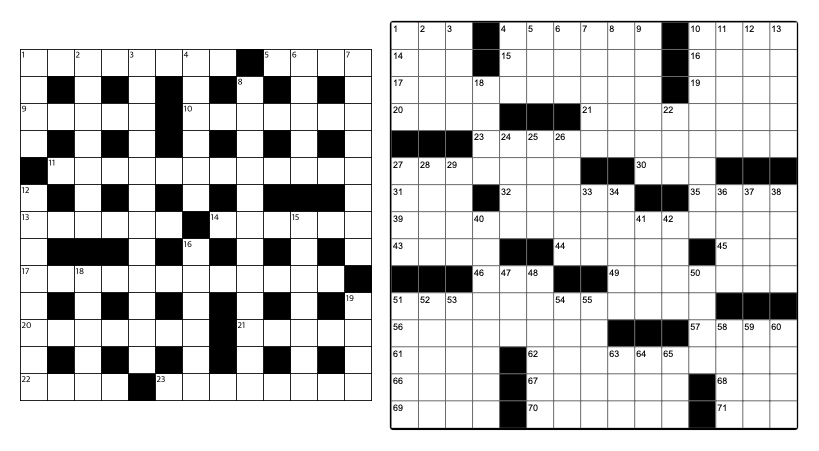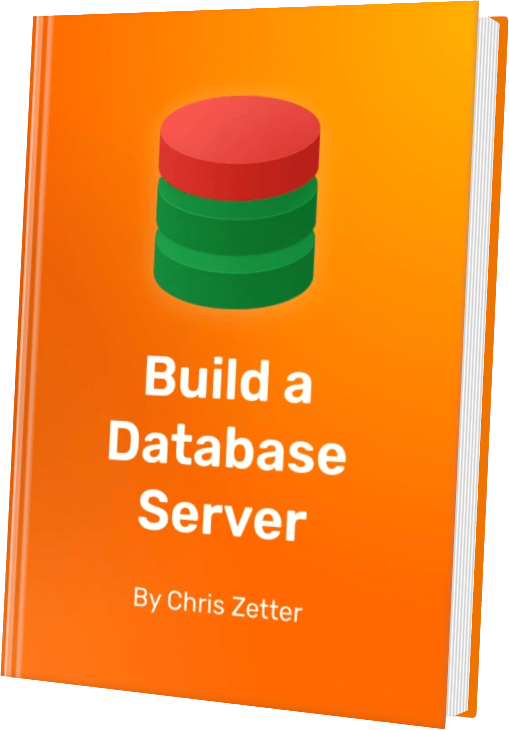Learning American Crosswords
Crosswords are incredibly diverse. The grids and styles of puzzles vary a lot between different countries and newspapers. After completing lots of quick-style crosswords and learning cryptic crosswords I wanted to try something new.
I started trying crosswords from The New York Times and got hooked. I loved the different style of crossword as well as the challenge and satisfaction of working out the themes of puzzles.
So what makes an American-style crossword different from a British one?
The Grid
The first thing you might notice is how dense the grid is. Every letter in the grid is checked meaning it is part of an across and a down answer. Typically, crosswords in the UK have squares that contain letters of just a single answer.

This is fantastic since you can still get the satisfaction of completing a crossword even if you can’t work out some of the clues.
Multiple Words
Another difference is that there is no signal when an answer may be made up of multiple words.
Here the answer is yewtrees. In a British crossword, it’s common to put the length of the words next to the clue (3,6) and to put a darker line or hyphen in the grid between words. Before I got used to this I sometimes wasted time trying to think of a longer single word that might fit.
Americana
There are a few clues in each crossword that you won’t be able to answer with unless you have an in-depth knowledge of popular culture and trivia from the US.
Some of the things you can expect to come up:
- North American geography
- Televisions networks, shows, actors and hosts
- State trivia such as mottos, birds and representatives
- Sporting terms, players and teams from baseball, basketball, American football and ice hockey
Here are some clues that I didn’t know the answer to or had a to make a guess:
State that’s the largest U.S. producer of lobsters [5 squares]
Native people of southern Arizona [4 squares]
M.L.B. division that includes the Astros [6 squares]
Lone Star State sch. [4 squares]1
This isn’t to say the NYT crosswords are solely focussed on the US. The crosswords have plenty of clues that ask for knowledge of Europe and the rest of the world:
Europe’s highest volcano [4 squares]
“Most assuredly, monsieur!” [3 squares]
Themes
It’s common for American crosswords to have a theme that ties lots of answers together. A theme can take the form of a clue that references other letters on the grid. These letters may be circled or highlighted.
For example, one clue to a theme was:
The answer was changestheworld. The circled letters were all parts of answers that contained the anagrams of the word ‘earth’.
Themes can sometimes ‘break’ your usual expectations of how the crossword works:
The answer to 49 across was sevenwonders. 58 across was one of the seven referenced clues that had the word wonder taken from it- woman as in the Wonder Woman movie. Without understanding the theme, the answer to 58 across makes no sense.
These aren’t all the kinds of theme you might see. Some are much more elaborate and unusual2.
Getting Started
If you’re used to doing British crosswords and want to give American ones a try, I found five things helpful:
-
Start with Monday’s puzzle.
Mondays are generally the easiest, and the crosswords get harder as the week goes on. Sundays in the New York Times has a medium-difficulty puzzle with a super-sized grid.
-
Remember each answer may contain abbreviations or multiple words.
You might be used to being told this in British-style crosswords.
-
Move on if you can’t get it.
It’s still possible to complete it if you don’t know a clue. Other clues have too many possible answers until more squares are filled in.
-
Always check the notes first.
Some crosswords have a note about the theme or something unusual that you’re expected to read before solving. On the web, these are displayed above the crossword, on the iOS app you need to tap the ‘i’ icon to read them.
-
Bring a friend.
Another person might know answers you don’t. Together you might be able to complete a puzzle.
If you want to try the New York Times Crosswords I recommend going through their freely available Tips and tricks tutorials and looking at some of the 11 Remarkable Crosswords for New Solvers.
If you like them, you can get a crossword subscription which also gives you access to the Mini (a smaller crossword) and other word & logic puzzles. You get a 30-day free trial then it costs 40 USD for the year (about £32). You can complete the crosswords in a browser or use the iOS app which is great for doing crosswords offline and syncing your progress 3.
You might also be interested in:
- How to make a crossword puzzle - (Video) how a crossword setter makes a puzzle for the New York Times.
- Inside the minds of Crossword Puzzle creators - (Video) Setters Anna Shechtman and Erik Agard talk about crossword culture.
- The Clinton/Bob Dole Crossword - How a crossword puzzle predicted the outcome of the 1996 US presidential election the by hedging its bets.
- Yes, You Can Write More Than One Letter in a Square - Explanation of how sometimes multiple letters might fit in one square (called a rebus).
There’s also my tutorial on how to solve British style cryptic crosswords.
All example clues taken from recent New York Times crosswords.
-
The answers to the last two examples are abbreviations. The clues hint at this by themselves containing abbreviations (M.L.B. and sch.). ↩
-
One crossword had circled letters which spelt the word butterfly and on completion, the app drew a line between each of the circled letters to draw a butterfly. ↩
-
Unlike some crossword tools, the NYT app only syncs when you close the puzzle. ↩
You can read more by me, follow me on Mastodon or subscribe.

I've just published my book - Build a Database Server. Learn how real databases like PostgreSQL and MySQL work by building your own database from scratch.
Find out more and see a preview.